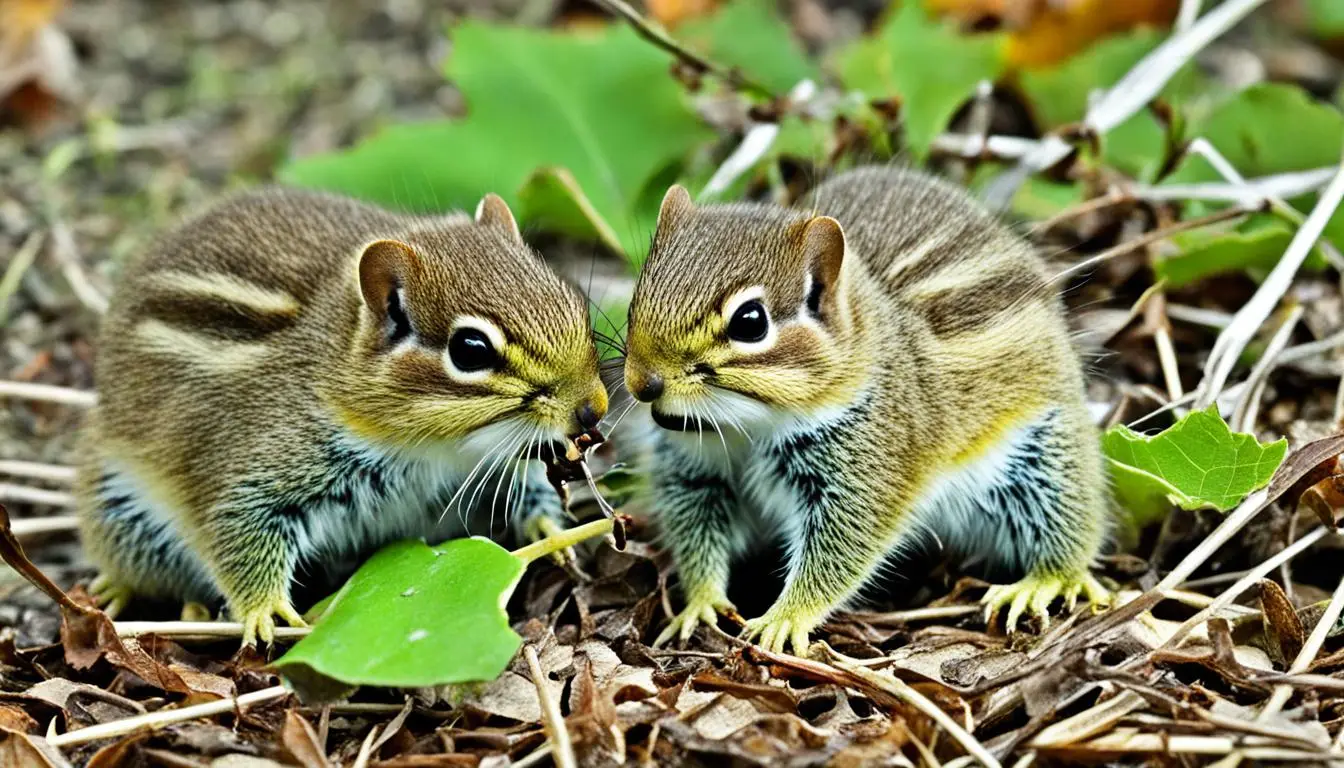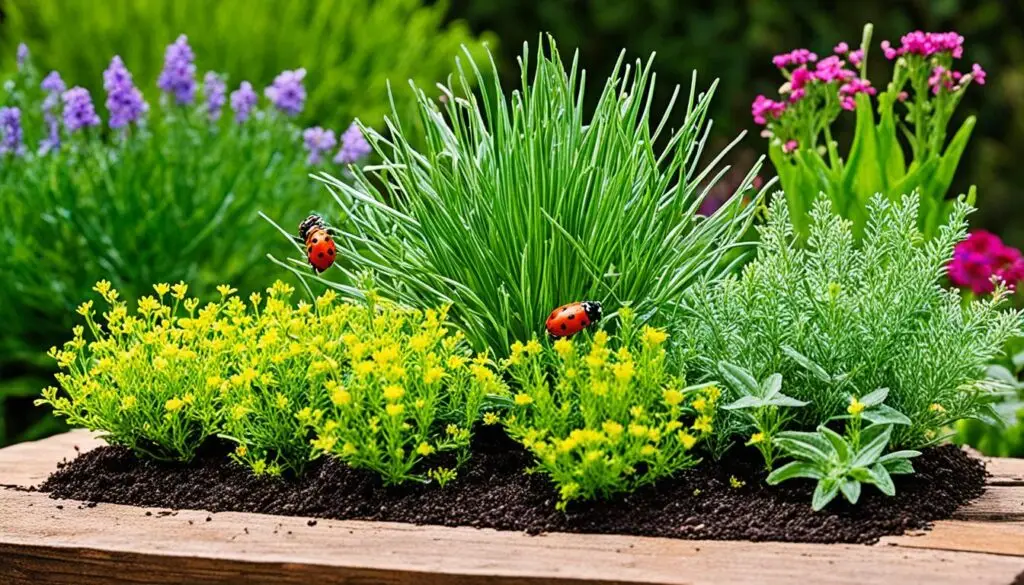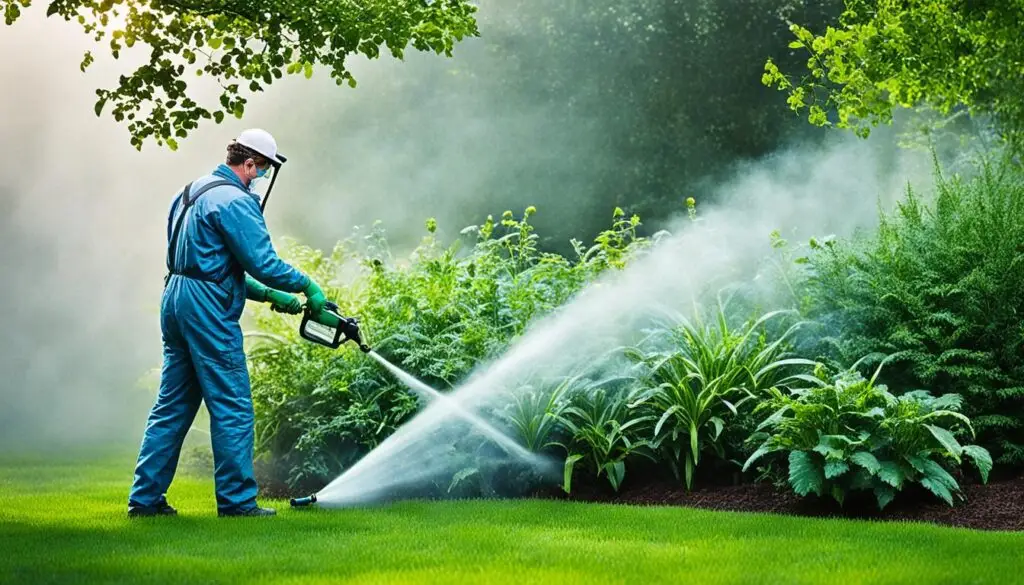As a gardener, dealing with pests and diseases is a big deal. But, with the right way, you can have a lively, healthy garden. This guide will show you how to spot, stop, and handle typical garden pests and diseases. All while making your garden a place where wildlife thrives and the environment is protected.
Learn to see the signs of pests and diseases. Then, use natural ways and some careful chemical use if needed. This way, you will be well-prepared to keep your garden looking great. Plus, you’ll read about the perks of having a garden that’s friendly to all kinds of insects and animals.
Key Takeaways
- Know common garden pests and diseases well to solve problems well.
- Prevent issues by watching your garden often and planting smartly.
- Repel pests naturally and make your garden welcoming to good bugs.
- Only use products like fungicides and insecticides when all else fails. Remember to protect the environment by using them safely.
- Make your garden a home for local wildlife by adding native plants and tips for a biodiversity boost.
Identifying Garden Pests and Diseases
The first step in fixing garden problems is telling pests and diseases apart. Gardeners learn to spot different signs of trouble. They can then figure out what’s wrong and how to deal with it.
Distinguishing Pests from Diseases
Garden pests can be seen like bugs, mites, or animals. Their signs are eaten leaves, webbing, or plant damage. Diseases, however, show up with things like leaf discoloration or added wilt.
Signs of Pest Infestation
To manage pests, recognizing the clues of their being there is key. Gardeners look for pests and the harm they cause. Common signs include leaf holes, odd colored leaves, and webs or egg groups.
Symptoms of Plant Diseases
Knowing what plant diseases look like is very important too. Gardeners watch for things like yellowing leaves or sudden wilting. They also keep an eye out for fungi or bacteria. Spotting these tells helps prevent problems from getting worse.
Knowing pests and diseases helps gardeners choose the right actions. This keeps their gardens healthy and beautiful.
Preventative Measures for Garden Pests and Diseases
Being proactive in your garden can keep it healthy and ward off pests and diseases. Use several steps to reduce these problems. This not only saves your plants but also helps the environment.
Regular Garden Monitoring
Checking your garden often is key to stopping pests and diseases early. Look closely at your plants for any warning signs. These can include odd color, drooping, or bugs. Catching issues early makes them easier to fix.
Good Gardening Habits
It’s important to always have your garden in good shape to avoid problems. This means doing things like changing where you grow crops, adding mulch to the soil, and having good water drainage. Keeping the air moving around plants also helps a lot. Also, make sure to regularly get rid of any dead plants. This helps stop pests and diseases from spreading.
Companion Planting
Putting certain plants together can keep pests away and improve plant health. This method, called companion planting, uses the strength of some plants to protect others. For instance, growing herbs like marigolds, lavender, or basil can keep many pests away. Also, some flowers attract useful bugs that eat the bad ones.
“Dealing with Common Garden Pests and Diseases”
In the search for a healthy garden, turning to natural ways is key. Using natural pest repellents, welcoming helpful bugs, and setting up traps are big steps. This part looks at how gardeners can fight off pests and diseases naturally. This keeps the garden’s balance just right.
Natural Pest Repellents
Many organic gardeners trust in the might of natural pest repellents. These include things like garlic, neem oil, and essential oils like peppermint. They’re great at keeping away bugs like aphids and spider mites. And they do it without hurting helpful insects. Using them in the garden is safe and green.
Beneficial Insects and Predators
Getting beneficial insects and predatory insects to help out is a smart move. Ladybugs, lacewings, and even praying mantises can be attracted. This is done by having varied plants that pollinators love. Also, making spots for bugs to stay in, like insect hotels, helps create a strong ecosystem. It’s a win-win way to control pests.
Trapping and Exclusion Methods
Don’t forget about the use of traps and keeping pests out. Setting up pheromone traps and barriers such as sticky tapes works well. Also, keeping pests away with physical barriers means they’re less likely to bother your garden. This, along with smart planting, is a good approach to pest control.
Specific Pest and Disease Control
As gardeners, keeping a garden in its best shape is key. We use natural ways like pest repellents and beneficial insects to control pests organically. But sometimes, chemicals like fungicides, herbicides, or insecticides are needed. We’ll look into how to use these chemicals carefully to fight specific pests and diseases.
Fungicides and Fungal Diseases
Funguses can really affect your plants, making them look sick and weak. Fungicides help, but you need to be smart about using them. First, try to make the area less friendly for fungus; do this by increasing air flow and lowering moisture. When needed, use fungicides carefully to keep your garden healthy.
Herbicides and Weed Control
Weeds love to take over, fighting your plants for resources. Pulling them out by hand or covering the soil with mulch works well. But sometimes, you might need herbicides. Always pick herbicides with care, thinking about what plants are nearby and the environment. Focus on sustainable ways to keep weeds in check.
Insecticides and Insect Pests
Bugs can be a big problem, hurting your plants. Before reaching for insecticides, try chemical-free methods. These include attracting helpful insects and using barriers. When using insecticides, remember they should be the last option. Always aim for ways that are safe for the environment.
Maintaining a Balanced and Sustainable Garden
Always work towards a garden that’s both healthy and eco-friendly. By balancing chemical treatments with natural methods, your garden can thrive. This approach keeps the environment safe and your garden flourishing for a long time.
Conclusion
Maintaining a garden is complex and needs a broad strategy to fight pests and diseases. This involves using prevention, natural methods, and some safe chemicals. By doing this, gardeners can make beautiful, eco-friendly places. These methods help plants grow and support many types of life.
Making your garden friendly to wildlife is key. It helps keep the local environment healthy. Gardeners can do this by adding native plants, water sources, and other animal-friendly spots. These places draw insects, birds, and other helpful creatures. They then support the garden by pollinating and controlling pests.
As you learn more about gardening, keep watching your plants and follow green methods. Try to make your garden work well with nature. By aiming for a balanced garden, you’ll see it flourish. Doing this also helps your community stay green and strong for the future.
FAQ
How can I identify common garden pests and diseases?
Look for clues like damaged leaves and bugs. Also, watch out for signs such as yellowing or wilting. You may see fungi or strange brown spots.
What are some effective preventative measures for dealing with garden pests and diseases?
Keep an eye on your plants by checking them often. Make sure the soil is healthy and switch the crops’ locations. Use plants that bugs don’t like next to the ones you want to protect.
What natural and organic methods can I use to control pests and diseases in my garden?
Use things like garlic, neem oil, and essential oils. These are natural bug repellents. Also, bringing in good bugs to eat the bad ones is another smart move.
Setting traps for pests is a helpful method too.
When should I consider using fungicides, herbicides, or insecticides in my garden?
Only use chemicals if nothing else works. Think about the harm they might do and apply them safely. Mixing natural and chemical methods is best to reduce harm to the environment.
How can I create a wildlife-friendly garden that supports biodiversity?
To make your garden a good home for wildlife, plant native species and include water areas. Add bird feeders and places for insects to live. Doing this, along with composting, makes a healthy garden for all creatures.








